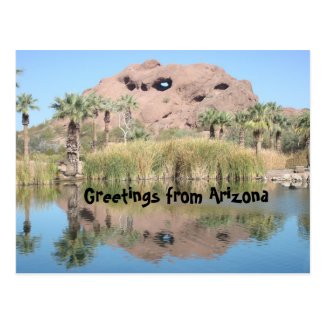When most people think about Arizona they think first about either the Grand Canyon or the desert. Not bad first thoughts as Arizona does feature a rather large desert and the Grand Canyon is one of this state's most popular tourist attractions. Today I am going to try to debunk a few popular myths and verify some facts about the state that I have chosen to call home.
It never rains
Never is a bit of an overstatement but I will say that it very rarely rains. In fact, I can't even remember the last time that it rained in Phoenix. Probably several months ago at least. Even during the monsoon season which should be our rainiest time, our rain consists of a downpour of rainwater for a short amount of time before the store quickly moves off. This past year we had a very dry monsoon and just for kicks, I checked our rain for this year so far. In 2020 up until today's date of November 20th in Phoenix, we have had a little over 4 inches of rain. You didn't read that wrong. During the entire year, we have had a grand total of about 4 inches. So never is an exaggeration but not by much. I will call this one relatively true.
Arizona is all desert
I can say that this one is for sure not true. Yes, the Sonoran Desert makes up a huge area of our state however we have a northern area that consists of mountains in elevations high enough for skiing, snowboarding, and sledding. It can get very cold and we get snow in areas like Flagstaff and Prescott. In fact, the scenery of northern Arizona is really nothing like the desert in the rest of the state. Forests abound and pine trees are the norm in the northern reaches. Man-made and natural lakes are plentiful. So we certainly have our share of desert landscapes in Arizona but this state is not only a desert.
Nothing can live in the desert
This one is certainly a myth. Our landscape is overwhelmingly brown. The desert floor, rocks, and tall mountains don't typically add color to the dry landscape. The desert is certainly not dead though. Aside from a wide range of birds, plenty of reptiles like snakes and lizards are also very comfortable in the desert. Spiders like tarantulas and insects are commonly seen on the hiking trails. Small mammals like ground squirrels and desert hares can easily be found as can larger mammals like javelina and bobcats. These animals tend to stay calm and shaded during the hottest parts of the day however and so unless you plan on heading into the desert after dark, it might seem as though nothing can live among the cactus and cracked earth. A huge variety of cacti thrive in the desert along with many other aloes and scrub brush. You might be surprised to hear that we actually have a wildflower season in the desert. If we get some rain during the winter, the mountainsides of the desert will burst into bloom for a short time each spring.
It is a dry heat
This one is absolutely true. Anyone who lives in the desert likes to use this in response to someone questioning how we can live with temperatures that can climb higher than 115 F in the summer. It is in fact a dry heat. In theory, this does make the heat more manageable. The low humidity, usually around 0%, allows the sweat to evaporate almost instantly which helps to cool the body. I can put wet bathing suits on the patio and within half an hour they are completely dry. We say that it is a dry heat as a logical response to the question, "How can you exist in 120-degree temperatures?" It is supposed to make explain why the heat isn't so bad. The flaw in this logic comes in the fact that hot is hot. Do you know what else creates a dry heat? Your oven can get very hot but it is a dry heat. You know that burst of heat when you preheat your oven and then open the door to slide your dish in to cook? That is a dry heat blasting you right in the face. That is a little like what it feels like to step outside during July and August in Arizona. I love the heat but in general, I don't recommend heading to the desert of Arizona during the summer unless you wish to spend a huge amount of time inside with air conditioning or in a pool.




Comments